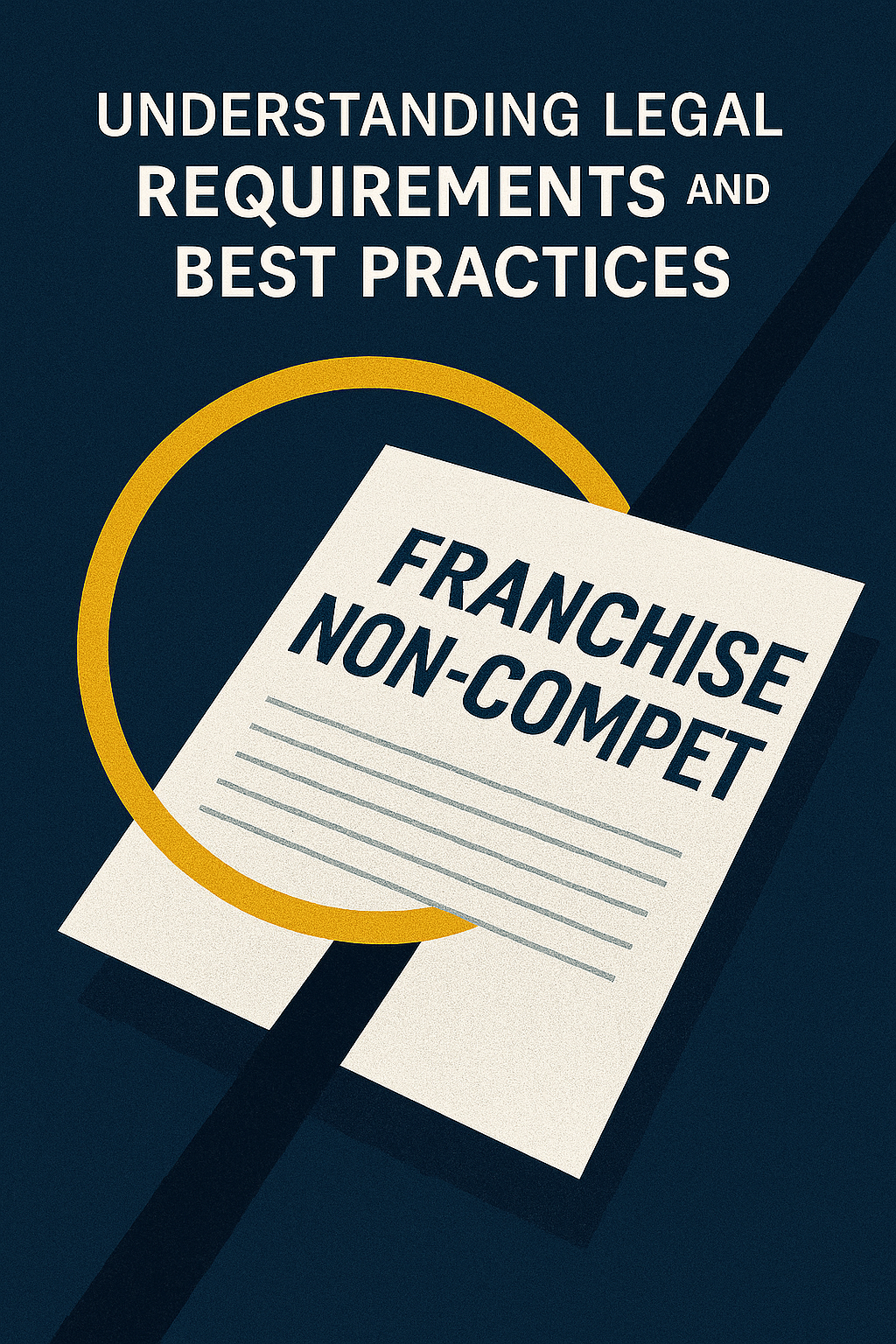Franchising can be a highly lucrative business model, allowing entrepreneurs to leverage established brands and proven systems to achieve success. However, as the franchising industry continues to grow, so does the challenge of dealing with market saturation and territory rights. In this article, we will delve into the concept of market saturation in franchising and explore various strategies that franchise owners can employ to overcome these challenges and maximize their profitability.
Understanding the concept of market saturation in franchising
In franchising, market saturation refers to the point at which a particular market becomes oversaturated with the same brand or type of franchise. This occurs when the number of franchises in a given area exceeds the capacity of the market to support them adequately. When this happens, competition intensifies, and franchise owners may experience a decline in sales and profitability. It is essential for franchise owners to understand the signs of market saturation and take proactive measures to address them.
One of the signs of market saturation in franchising is a decrease in customer demand. When a market becomes oversaturated with the same brand or type of franchise, customers may have more options to choose from, leading to a decrease in demand for each individual franchise. This can result in lower foot traffic, fewer sales, and ultimately, a decline in profitability for franchise owners.
Another indicator of market saturation is increased competition among franchise owners. As the number of franchises in a given area increases, each franchise must compete for a share of the market. This can lead to price wars, aggressive marketing tactics, and a constant battle to attract and retain customers. Franchise owners may need to invest more resources in advertising and promotions to stand out from the competition and maintain their market share.
Identifying signs of market saturation in your franchise territory
To effectively handle market saturation, franchise owners must first be able to identify the signs indicating that their territory is becoming oversaturated. Decreasing sales and customer traffic, increased competition from other franchisees, and a decline in customer loyalty are all red flags that suggest market saturation. Franchise owners should closely monitor these indicators to take timely action and avoid significant negative impacts on their business.
Another sign of market saturation is a decrease in profit margins. As competition increases and customers have more options to choose from, franchise owners may find it difficult to maintain their profit margins. This can be due to price wars or the need to offer discounts and promotions to attract customers.
In addition, a saturated market may also lead to a decline in the quality of products or services. As franchise owners try to cut costs and stay competitive, they may compromise on the quality of their offerings. This can result in dissatisfied customers and a damaged reputation for the franchise.
Evaluating the impact of market saturation on franchise growth and profitability
Market saturation can have a detrimental effect on franchise growth and profitability. Increased competition leads to a fragmentation of the customer base, making it challenging for each franchise to capture and retain a significant market share. This, in turn, can result in declining sales, reduced profit margins, and a struggle to cover operating expenses. Franchise owners must evaluate the impact of market saturation on their business and develop strategies to mitigate its adverse effects.
One strategy that franchise owners can employ to mitigate the adverse effects of market saturation is to focus on differentiation. By offering unique products or services, franchises can stand out from the competition and attract a niche customer base. This can help them maintain a steady stream of customers and potentially increase their market share, even in a saturated market.
Strategies for overcoming market saturation in your franchise business
Overcoming market saturation requires proactive and strategic initiatives. Here are some strategies that franchise owners can consider:
- Explore alternative territories: If your current territory is saturated, consider expanding into new areas where your franchise brand is not yet strongly represented. This allows you to tap into untapped markets and diversify your customer base.
- Maximize territorial rights: Leverage your existing territorial rights to protect your investment by implementing exclusive marketing and expansion strategies within your territory. A strong territorial presence can deter competitors and maintain a loyal customer base.
- Navigate legal considerations: Franchise owners must understand and comply with legal considerations related to territory rights. Consult with legal professionals to ensure your actions align with franchise agreements and applicable laws.
- Negotiate territorial boundaries: In cases where neighboring franchisees encroach upon your territory, proactively communicate with both the franchisor and neighboring franchisees to negotiate territorial boundaries that preserve fairness and market potential for all parties involved.
- Implement effective marketing and advertising strategies: Invest in innovative and targeted marketing campaigns to combat market saturation. Explore creative ways to differentiate your franchise from competitors and communicate your unique value propositions to customers.
- Leverage technology and innovation: Stay ahead of the competition by embracing technology and innovation. This can include adopting new digital platforms, implementing advanced data analytics tools, and using automation to enhance operational efficiency and customer experiences.
- Build strong relationships with local communities: Cultivating relationships with local communities can create a sense of loyalty and support for your franchise. Engage in community events, sponsor local initiatives, and actively participate in charitable activities to establish a positive brand image.
- Diversify product offerings or services: To attract new customers and differentiate yourself in saturated markets, consider expanding your product offerings or services. A diverse range of options can cater to different customer preferences and increase your chances of success.
- Collaborate with other franchisees: Form partnerships and joint marketing initiatives with other franchisees in your brand network to expand your reach and pool resources. Collaborative efforts can help overcome challenges posed by market saturation and collectively drive growth.
- Monitor market trends and consumer behavior: Stay informed about market trends and consumer behaviors through market research and data analysis. Identify untapped opportunities and adjust your strategies accordingly to address changing market dynamics.
- Adapt pricing strategy: Competing in saturated markets may require adjustments to your pricing strategy. Consider offering competitive pricing, bundle deals, or loyalty programs to entice customers and remain attractive in the market.
- Provide exceptional customer service: In a saturated market, exceptional customer service can set you apart from competitors. Train your staff to deliver outstanding experiences, go the extra mile for your customers, and build long-term relationships based on trust and satisfaction.
- Invest in ongoing training and development: Keep your franchisees ahead of the competition by investing in their training and development. Regularly provide them with updated skills, knowledge, and resources to navigate a saturated market successfully.
- Utilize data analytics and business intelligence tools: Utilize data analytics and business intelligence tools to gather insights about market saturation and territory rights. Make informed decisions based on data-driven analyses that can guide your future strategies and actions.
- Seek professional guidance: If you encounter challenges in managing market saturation and territory rights, do not hesitate to seek professional guidance. Franchising consultants or industry experts can provide valuable advice and insights to help you navigate these complexities effectively.
Invest in continuous market research: To stay ahead of market saturation, it is crucial to invest in continuous market research. This includes monitoring competitor activities, analyzing customer preferences, and identifying emerging trends. By staying informed about the market landscape, you can proactively adapt your strategies and offerings to meet changing customer demands.
Offer personalized experiences: In a saturated market, providing personalized experiences can help you stand out from the competition. Utilize customer data and insights to tailor your products or services to individual preferences. This can include personalized recommendations, customized promotions, or exclusive loyalty programs. By making customers feel valued and understood, you can foster long-term loyalty and differentiate your franchise.
Conclusion
Handling market saturation and territory rights in franchising requires careful consideration, proactive measures, and a willingness to adapt to changing market conditions. By understanding the signs of market saturation, evaluating its impact, and implementing strategies to overcome these challenges, franchise owners can position themselves for long-term success and sustained profitability. Remember, each franchise business is unique, and it is essential to tailor the strategies mentioned above to suit your specific circumstances. With the right approach, even in saturated markets, franchise owners can thrive and achieve their desired business objectives.
Furthermore, franchise owners should also prioritize building strong relationships with their customers and providing exceptional customer service. This can help differentiate their business from competitors in saturated markets and create a loyal customer base. Additionally, staying updated on industry trends and continuously innovating can give franchise owners a competitive edge and attract new customers. By constantly seeking ways to improve and adapt, franchise owners can navigate market saturation and territory rights challenges more effectively and maintain a successful franchise business.






